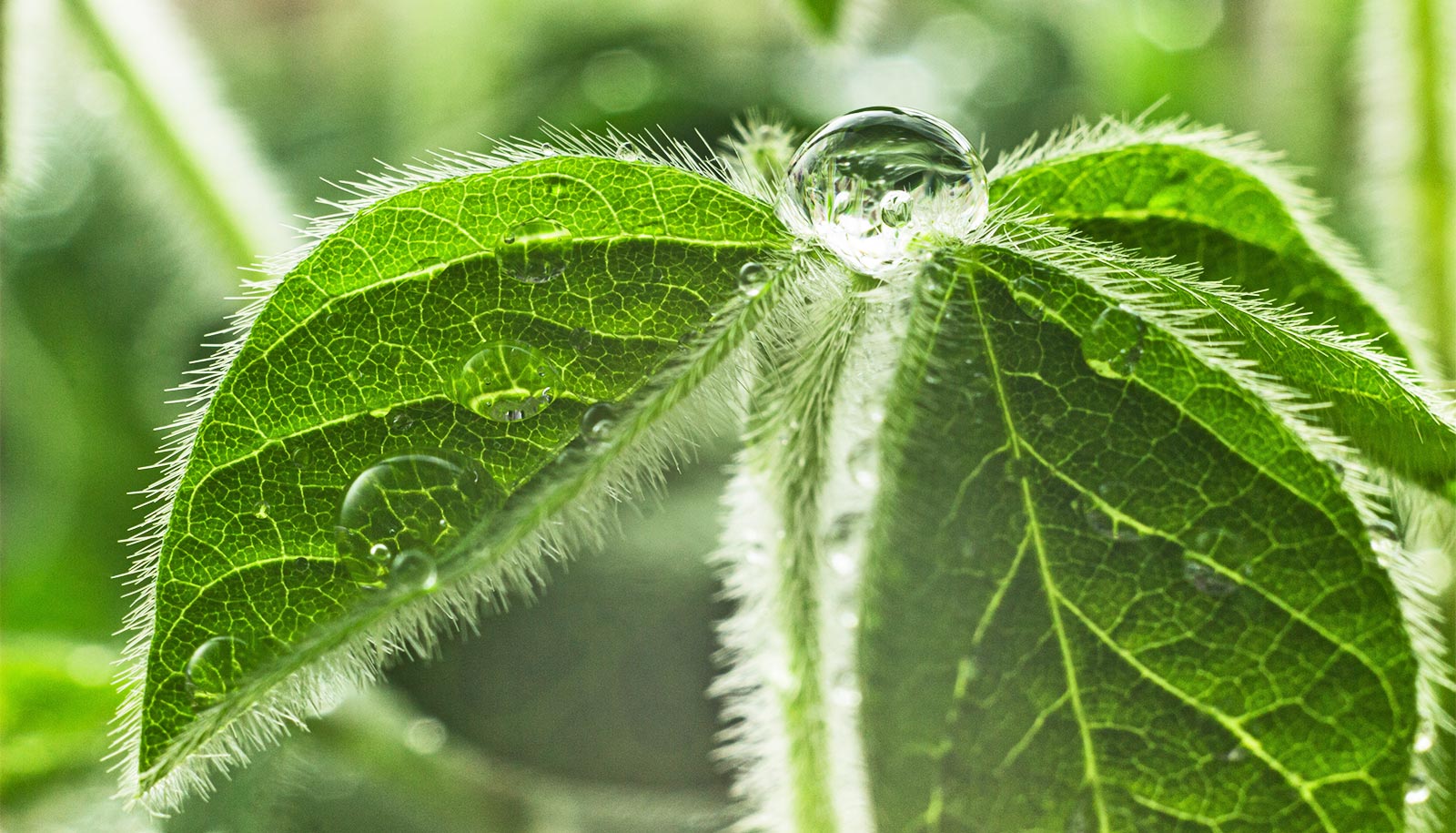Mounting levels of atmospheric carbon dioxide lessen the medicinal properties of milkweed plants that protect monarch butterflies from disease, a new study shows.
Milkweed leaves contain bitter toxins that help monarchs ward off predators and parasites, and the plant is the sole food of monarch caterpillars.
As reported in Ecology Letters, researchers grew four milkweed species with varying levels of those protective compounds, called cardenolides.
Half the plants grew under normal carbon dioxide levels, and half of them were bathed, from dawn to dusk, in nearly twice that amount. Then hundreds of monarch caterpillars ate the plants.
The most protective of the four milkweed species lost its medicinal properties when it grew under elevated CO2, resulting in a steep decline in the monarch’s ability to tolerate a common parasite. Further, lifespan was reduced by a one week.
Not just monarchs
The study looked solely at how elevated carbon dioxide levels alter plant chemistry and how those changes, in turn, affect interactions between monarchs and their parasites. It did not examine the climate-altering effects of the heat-trapping gas emitted when fossil fuels are burned.
“When we play Russian roulette with the concentration of atmospheric gases, we are playing Russian roulette with our ability to find new medicines in nature.”
“We discovered a previously unrecognized, indirect mechanism by which ongoing environmental change—in this case, rising levels of atmospheric CO2—can act on disease in monarch butterflies,” says first author Leslie Decker, who conducted the research for her doctoral dissertation in the University of Michigan evolutionary biology department and is now a postdoctoral researcher at Stanford University.
“Our results emphasize that global environmental change may influence parasite-host interactions through changes in the medicinal properties of plants,” she says.
The findings have broad implications, says ecologist Mark Hunter, Decker’s dissertation adviser and coauthor of the paper. Many animals, including humans, use chemicals in the environment to help them control parasites and diseases. Aspirin, digitalis, Taxol, and many other drugs originally came from plants.
“If elevated carbon dioxide reduces the concentration of medicines in plants that monarchs use, it could be changing the concentration of drugs for all animals that self-medicate, including humans,” he says.
“When we play Russian roulette with the concentration of atmospheric gases, we are playing Russian roulette with our ability to find new medicines in nature.”
Earlier work in Hunter’s lab showed that some species of milkweed produce lower cardenolide levels when grown under elevated carbon dioxide. That finding caught the attention of Decker, who with Hunter designed a follow-up study to look at the potential impact of rising CO2 on the disease susceptibility of monarchs in the future.
They created an experimental system that allowed them to manipulate and measure all the key links in the chain: carbon dioxide levels, toxin concentrations in milkweed leaves, infection by parasites, and monarch susceptibility to those parasites. The fieldwork took place in 2014 and 2015.
Monarch lifespan
Inside 40 growth chambers, they exposed milkweed plants to two different carbon dioxide levels. Twenty chambers were maintained at current global CO2 concentrations of around 400 parts per million, and 20 chambers received 760 ppm of CO2, a level that could be reached well before the end of the century if the burning of fossil fuels continues unabated.
The four milkweed species differed in their levels of protective cardenolide compounds. The most protective species was Asclepias curassavica, commonly known as tropical milkweed. The chamber-raised plants were fed to monarch caterpillars, and each caterpillar got a steady diet of a single milkweed species with known carbon dioxide exposure.
Three-day-old caterpillars were also infected with carefully controlled doses of a common monarch parasite that is distantly related to the malaria pathogen. Ophryocystis elektroscirrha is a protozoan that shortens adult monarch lifespan, impedes its ability to fly, and reduces the number of offspring it produces.
Over about two weeks’ time, the infected caterpillars grew to a length of about two inches, with striking yellow, white, and black bands. Then they pupated inside a hard-shelled chrysalis for about 10 days before emerging as orange-and-black butterflies.
At the Biological Station lab, Decker and Hunter raised hundreds of adult monarchs. They recorded the lifespan of each individual—in Michigan, monarch butterflies typically live for about a month—, and counted the number of parasitic spores on each carcass.
Piecing together all this data, the researchers were able to determine how changes in atmospheric carbon dioxide levels altered toxin concentrations in the four milkweed species and, in turn, how exposure to those plants affected the monarch’s lifespan and disease susceptibility.
The largest declines in parasite tolerance and butterfly lifespan occurred in monarchs that fed on A. curassavica, a milkweed species in which cardenolide production declined by nearly 25 percent when grown under elevated CO2.
Milkweed in suburbs and cities could restore monarchs
In caterpillars that fed on A. curassavica milkweed grown under elevated CO2, tolerance to the parasite declined by a whopping 77 percent when compared to caterpillars that fed on A. curassavica grown under ambient-level CO2.
Monarchs that fed on A. curassavica grown under elevated CO2 suffered a reduction in lifespan of seven days due to parasitic infection. Parasites reduced mean lifespan by only two days for monarchs that ate A. curassavica grown under ambient CO2 levels.
“We’ve been able to show that a medicinal milkweed species loses its protective abilities under elevated carbon dioxide,” Decker said. “Our results suggest that rising CO2 will reduce the tolerance of monarch butterflies to their common parasite and will increase parasite virulence.”
Monarch butterflies are up against multiple threats
In recent years, monarch populations have been declining rapidly. Most discussions of the monarch butterfly’s plight focus on habitat loss: logging of trees in the Mexican forest where monarchs spend the winter, as well as the loss of wild milkweed plants that sustain them during their annual migration across North America.
“Habitat loss, problems during migration, and climate change all contribute to monarch declines,” Hunter said. “Unfortunately, our results add to that list and suggest that parasite-infected monarchs will become steadily sicker if atmospheric concentrations of CO2 continue to rise.”
Jacobus de Roode of Emory University is a coauthor of the paper. The National Science Foundation supported the work.
Source: University of Michigan



